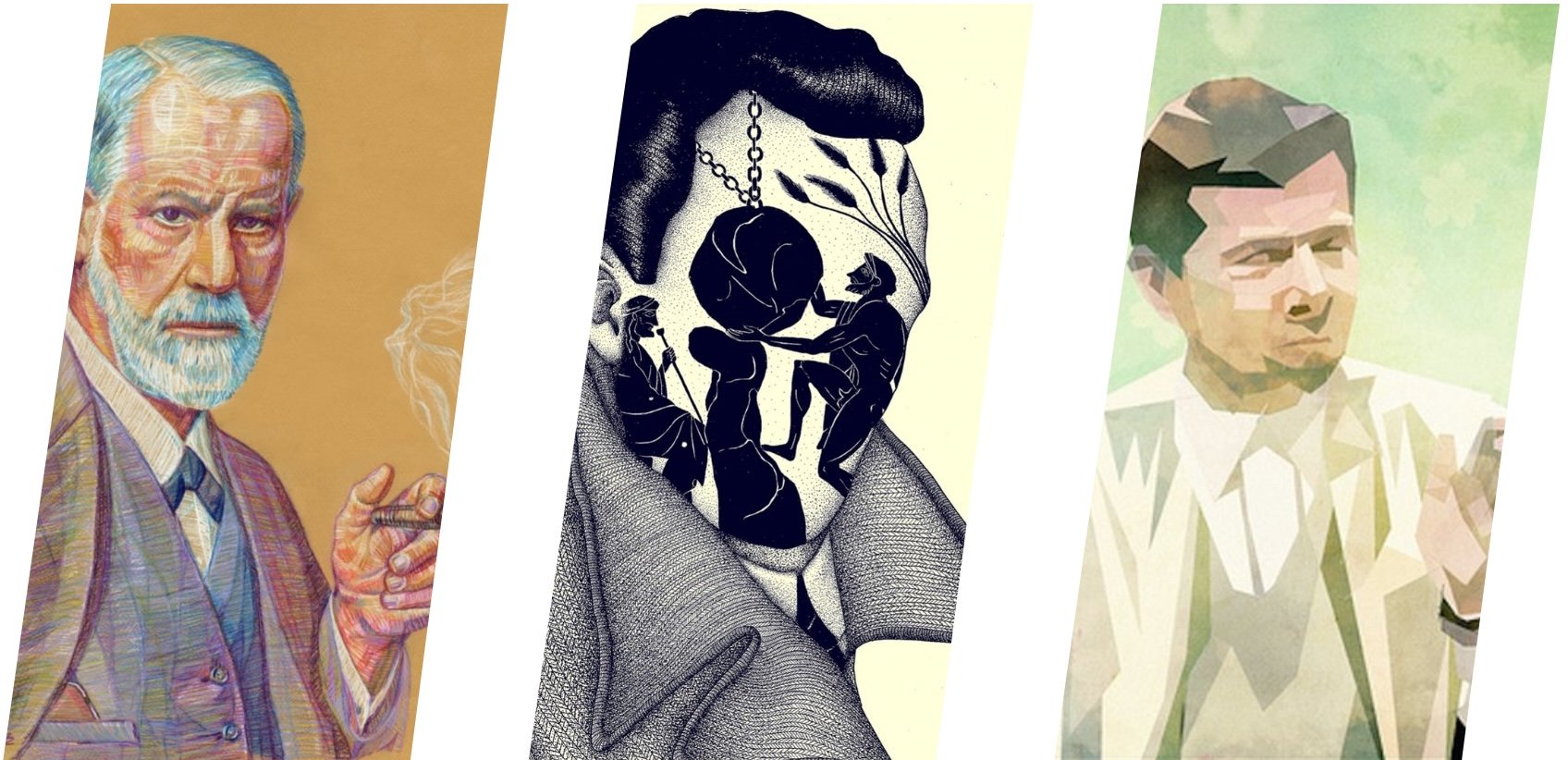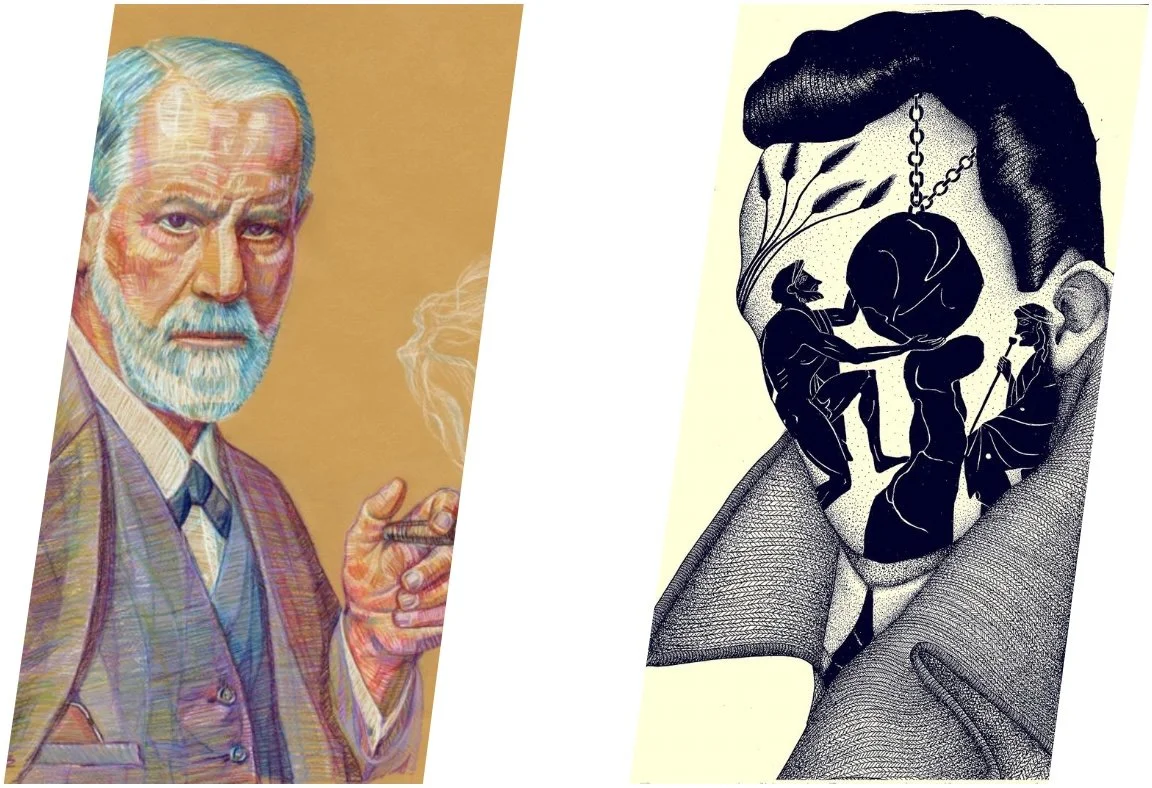
Approach
Therapy is foremost the establishment of a therapeutic relationship; a relational space in which you are free to truthfully explore the themes that weigh on you. But therapy is far more than just an ‘intellectual’ exchange of psychological insights. It is equally an emotional experience in which the simple fact that you’re being accepted and not judged while you’re at your most vulnerable, is sometimes more alleviating than any insight or interpretation can hope to be.
During your therapeutic journey, it is my role to think and feel along with you while we discern your emotional patterns, optimize the way you navigate the world of form, thought and future, and introduce and/or maintain a certain lightness to your life by cultivating a background-awareness of what you are beyond form, thought and time.
During our work I’ll mostly draw from my interactive three-level framework that slowly came to coherence over the past 12 years.
If you’re interested in this three-level framework, and how much your condition can improve by letting the therapeutic traditions from all three levels work for you in tandem, please see below.
The interactive three-level framework
Throughout the years it slowly became clear to me that no one single therapeutic school or tradition truly addresses the full spectrum of psychological suffering. Equally, I started to observe that suffering takes place on three distinct but interacting levels, each one being a level of abstraction above the former: the neurotic level (1), the existential level (2) and the spiritual level (3).
To me, the schools and traditions that best address suffering on those three levels separately are 1) Psychodynamic Psychotherapy, (2) Mytho-Existentialism and Existential Psychotherapy and (3) Perennial Philosophy.
While studying these traditions I found that:
These traditions often seem unaware of each other’s insights and methods.
It can be very hard, if not impossible, to truly heal on one given level without also thoroughly addressing the other two levels.
The insights and methods used for alleviation on the three separate levels, are actually highly complementary. And when used cross-level, they can lead to an overall improvement of your condition far beyond what you thought possible.
Allow me to share a few examples
It is important to establish on what level(s) your suffering takes place. Simply put; being depressed and being unhappy are not the same thing. Suffering from depression due to repressed emotional themes and patterns (level 1), is not the same thing as being unhappy because your life simply is not what you want it to be (level 2). Of course, they can both be the case at the same time, but they’re not the same thing. That’s equally true for anxiety.
But let’s say you establish that you are indeed struggling with anxious or depressed feelings on the neurotic level (1).
The Psychodynamic approach - foremost David Malan’s ‘Triangle of Conflict’ and ‘Triangle of Persons’ - will help you become conscious of the true nature of your feelings. They will help you uncover your emotional and relational patterns, and the defense mechanisms surrounding them. This process can be very illuminating, insightful and beneficial.
However, I have equally found that mere cerebral awareness, the mere knowing of your true feelings, often does not lead to lasting relief. Knowledge often does not equal alleviation.
How the Psychodynamic and Perennial tradition complement each other
In the Perennial tradition (level 3) psychiatrist David Irwin for example, author of Letting Go - The Pathway of Surrender, asks you not to engage with your painful thoughts. Instead, he proposes his Letting Go method: an exercise to slowly dissolve your painful thoughts by merely being witness to the emotional tone colour from which those countless painful thoughts sprout, without trying to change or resist anything.
Perennial teacher Eckhart Tolle in turn emphasizes that those thoughts and feelings, this ‘pain-body’ is not who you are, and that that there is a dream-like quality to the thinking mind as such. After all, is there such a substantial difference between involuntary thought while awake and dreams while asleep?
He posits that the thinking mind itself is mostly just a dream-like passenger of your actual, essential, self: the merely witnessing, conscious emptiness in which those thoughts and feelings arise, and by which they are experienced. Thoughts and feelings are thus merely objects that appear to you, like a building or bicycle appear to you, but just like those objects, are not you.
Ruper Spira, from the same tradition, points out that the only reason you experience psychological pain is that within you resides a consciousness that is aware of it. Your thinking mind doesn’t experience itself, consciousness experiences your thinking mind. Subsequently he would ask you to focus, instead of on the content of your pain, on the fact that you host a consciousness that is aware of the pain. Why? To bring you in touch with the one dimension of your being that beyond threat and lack, and is inherently at peace under any circumstance: consciousness.
I have found that these are indeed the best methods to dissolve painful thoughts and feelings on the neurotic level.
However, there is nothing ‘simple’ about surrender, ‘Letting Go’ or ‘being aware of being aware’ if your painful thoughts and feelings are in fact part of an active defense mechanism aimed at keeping your true feelings repressed.
In summary:
If you limit yourself to the mere cerebral knowing of your true feelings through Psychodynamics (level 1), without dissolving them through ‘Letting Go’, presence or ‘awareness of awareness’ (level 3), you’ll find that knowledge alone often does not redeem.
But if you practice Perennial methods (level 3) without first separating defence mechanisms from true suppressed feelings (level 1), you will spin your wheels in the mud and your symptoms will at best only temporarily abate.
So, allow yourself maximum improvement by letting these two great traditions complement each other’s deficiencies.
How the Perennial tradition complements Mytho-Existentialism
Let’s say you’re trying to make something of your life because some guy on YouTube kept telling you that if you orient yourself on the highest goal you can conceptualize, your life will work out better than if you do anything else (level 2).
That would be great, because he’s probably right.
However, there’s an ever-present pitfall in dedication: the contraction of attachment to outcome.
Mostly through personal experience, I came to see that this is where the Perennial tradition (level 3) complements Mytho-Existentialism and Existential Psychotherapy (level 2) so beautifully. And it does so in a way that’s quite a bit more substantive than the more common “it’s not about the destination, it’s about the journey”-stuff.
In summary:
Mytho-existentialism is very much predicated on the notion of future attainment and achievement, on ‘improving and adding to yourself’ on the level of personhood. This tradition views your personhood as your most essential, truest identity. Therefore, it regards the optimization of your personhood as of the utmost importance.
This strong emphasis on your personhood, and by extension the imperative to ‘become someone’ on the level of form, will often give rise to a strong attachment to the outcome of your efforts to achieve a given goal.
But attachment to outcome is a contraction that actually (drastically) reduces the chances of attaining a desired outcome.
The Perennial tradition offers you a way to decontract and relax your efforts, by helping you to detach from outcome.
How? By strongly de-emphasizing the ultimate reality - and by extension the ultimate importance - of your personhood.
The Perennial tradition invites you to ask the question: Who am I if I take everything on the level of form out of the equation? My thoughts, feelings, relationships, occupations, achievements, ideologies, skills, convictions, struggles, stories, possessions and status. Without all that is not truly inherent to you, what is it that remains? In short: who am I beyond my personhood?
The Perennial tradition does not view your personhood as your most essential, truest identity. Instead, it views your personhood - consisting mostly of involuntary thought and non-inherent characteristics - as a dream-like state to which you can awaken.
But it’s not so much about denying the reality of your personhood. It’s about recognizing there is a higher reality that precedes it; the reality in which your personhood takes place and by which it is experienced.
To the Perennial tradition, your most essential, truest identity is simply the conscious emptiness in which that dream-like state of personhood arises, is experienced and dissolves.
Recognizing your essential identity, and in turn recognizing the dream-like unreality of your personhood, is the Perennial key to detachment from the outcome of your efforts on the level of form.
And, somewhat ironically, it is also one of the most effective ways to actually achieve your intended outcomes.
It breathes a playful lightness into your self-concept, self-image and endeavors that somehow tends to make life flow and work more with and for you, instead of against you.
How Mytho-Existentialism complements the Perennial tradition
The Perennial tradition (level 3) approaches suffering on a radically abstract level. And in theory [emphasis added], it indeed answers the ultimate therapeutic question of how to end suffering itself: “No Self, No Problem”.
However, because of its radically abstract nature, it very often fails to offer practical, concrete guidelines in real-world situations. When it comes to questions of ‘what to do?’ when trying to navigate the world of relationships, hierarchies, conflict, competition and occupation, Perennial teachers often refer to an interpretation of the Buddhist concept of “right action”.
That means as much as: if your actions or responses arise from the recognition of consciousness as your essential identity, your actions and responses are the right ones.
At best, that’s a bit austere. At worst, it’s some vague advice that’s woefully insufficient when a real-world situation needs to be navigated, or when you’re trying to properly orient your life on the level of form.
I’ve always seen this insufficiency as the weakest link in Perennial teachings. But I equally came to see how well Mytho-Existentialism (level 2) makes up for this shortcoming. How does it do that?
In summary:
Mytho-Existentialism posits the existence of an ‘archetypal landscape’ in which human life always has and always will play out.
The archetypal landscape looks as follows:
There will always be tragedy such as accidents, illness, (natural) disasters, loneliness and simple bad luck. Tragedy is misfortune without a driving agency behind it.
Equally, there will always be malevolence, both within yourself and others. Malevolence is, however subtle at times, harmful intent, almost always sprouting from grievance or tragedy.
As tragedy and malevolence dance with time, life will always tend to either devolve towards chaos or accelerate towards tyranny.
This is - however subtle at times - the case for life on the individual, relational and societal level.
Mytho-Existentialism then asks the question: is there a mode of being that allows you to optimally navigate this archetypal landscape of tragedy, malevolence, chaos and tyranny?
Its answer is yes, and it is to be found in mythology; more specifically in what Joseph Campbell called The Hero with a Thousand Faces, the archetypal hero.
The archetypal hero is a universal mythological figure who, by millennia of distillation through storytelling, has come to embody the characteristics that allow you to optimally navigate the archetypal landscape.
Those characteristics can roughly be summarised as: attention, truthful speech, courage, discipline and a willingness to voluntarily confront the chaos of the unknown and the tyranny of the known.
Conversely, mythology equally offers the archetypal villain, the figure who has come to embody the characteristics that maximize suffering: the “dark triad” of resentment, arrogance and deception. In Western scripture, it is Abel’s hostile brother Cain. In modern culture an identical figure was probably best portrayed by Joaquin Phoenix's role as Commodus in Gladiator.
The archetypal landscape, hero and villain convey the most compact model for navigating the human condition on the level of form, from which answers to practical life questions of ‘what (not) to do when…?’ can be derived and abstracted.
This ‘knowledge’ is hardcoded into our body and neurology: we experience a ‘correct’ navigation of the archetypal landscape as the sensation of meaningfulness.
Important note: ‘optimal navigation’ does not mean every story gets a happy ending. It simply means life’s challenges are contended with in a way that entails minimal suffering - not the absence of suffering.
How Psychodynamics and Mytho-Existentialism complement each other
The relationship between the Psychodynamic (level 1) and Mytho-Existentialist (level 2) traditions is mostly a relationship between truth and courage.
The Psychodynamic approach, most notably the aforementioned Triangle of Conflict and Triangle of Persons by David Malan, is designed to help you uncover the true nature of the themes and feelings that weigh on you. It will help you separate the actual from the defense mechanisms.
And this is where the Psychodynamic approach complements Mytho-Existentialism gracefully
The latter posits that truthful thought, and by extension truthful speech, are the most important instruments for optimally navigating the archetypal landscape. It hypothesizes that situations that arise as a result of spoken truth are by definition the optimal outcome.
The Psychodynamic tradition will help you to find out what your true feelings are. And that awareness, that knowing of your actual feelings, is a condition for truthful thought and speech about the only thing you can truly hope to have any control over in this world; yourself.
But Mytho-Existentialism equally complements the Psychodynamic tradition in return
Repression happens for a real reason. The void underneath the display is shielded for a real reason. We look away for very real reasons. ‘Going there’, in a real, felt sense, can often be a quest so daunting that it is postponed for a lifetime.
But there’s a deeply corresponding motif throughout mythology: redemption is to be found there where you least want to look.
When Arthur’s Knights of the Round Table set out to find the Holy Grail - the symbol for that which redeems - they agreed to individually enter the forest there where it seemed darkest to them.
There are countless examples of this motif in ancient and modern storytelling. Where did Bruce Wayne actually become Batman? By voluntarily exposing himself to, and maintaining his composure amidst his greatest (childhood) fear; a cave full of rampaging bats.
In short, doing the work, therapeutically, is no mean task. But you are encouraged, carried even, by mythology itself to do exactly that.




